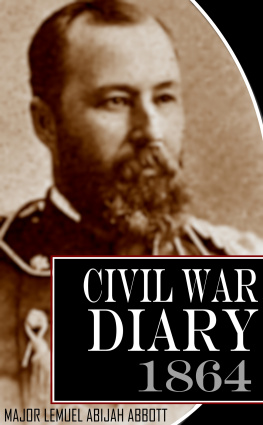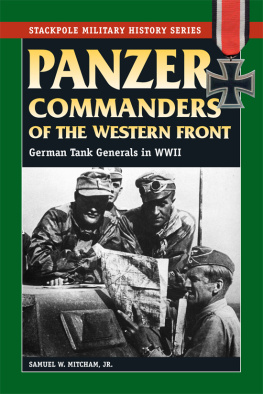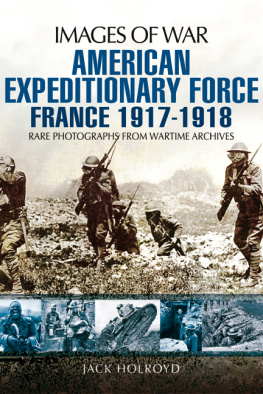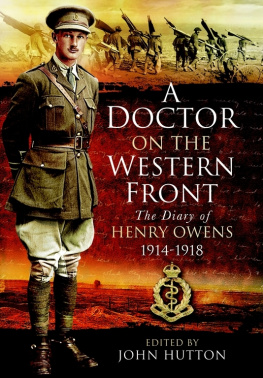
In the Company of Generals
The World War I Diary of Pierpont L. Stackpole
Edited with an Introduction by Robert H. Ferrell
University of Missouri Press
Columbia and London
Copyright 2009 by
The Curators of the University of Missouri
University of Missouri Press, Columbia, Missouri 65201
Printed and bound in the United States of America
All rights reserved
5 4 3 2 1 13 12 11 10 09
Library of Congress Cataloging-in-Publication Data
Stackpole, Pierpont L. (Pierpont Langley), 1875-1936.
In the company of generals : the World War I diary of Pierpont L. Stackpole / edited with an introduction by Robert H. Ferrell.
p. cm.
Includes bibliographical references and index.
Summary: Stackpoles diary provides an insiders view into the command decisions of Lieutenant General Hunter Liggett, who took charge of the U.S. First Army in mid-October 1918 and reorganized it in preparation for its breakthrough of the German lines at the Meuse-Argonne in November Provided by publisher.
ISBN 978-0-8262-1870-4 (cloth : alk. paper)
ISBN 978-0-8262-7200-3 (electronic)
1. Liggett, Hunter, 1857-1935Military leadership. 2. Stackpole, Pierpont L. (Pierpont Langley), 1875-1936Diaries. 3. United States. ArmyOfficers Diaries. 4. GeneralsUnited StatesHistory20th century. 5. Command of troopsHistory20th century. 6. United States. ArmyOrganization History20th century. 7. United States. ArmyHistoryWorld War, 19141918. 8. United States. Army. Army, 1stHistory20th century. 9. United States. Army. American Expeditionary ForcesHistory. 10. Argonne, Battle of the, France, 1918. I. Ferrell, Robert H. II. Title.
E745.L54S73 2009
940.436dc22
2009028219
 This paper meets the requirements of the
This paper meets the requirements of the
American National Standard for Permanence of Paper
for Printed Library Materials, Z39.48, 1984.
Design and composition: Jennifer Cropp
Printer and binder: Thomson-Shore, Inc.
Typefaces: Garamond, Minion, and Worcester
Frontispiece: Pierpont L. Stackpole
For Beverly Jarrett, who gave twenty
years of her life to the State of Missouri
and to the state of scholarship
Maps and Photographs
All the maps are from American Armies and Battlefields in Europe (Washington, D.C.: Government Printing Office, 1938), the armys official guide published under the supervision of General Pershing; it was reprinted by the armys Center of Military History in 1995. Several maps contain signs for stops and arrows for routes, referring readers to portions of the guides text.
All the photos in the photo section on are from the 111-Signal Corps. The photograph of Pierpont L. Stackpole that appears in the frontispiece is from the George C. Marshall Foundation, Lexington, Virginia.
Acknowledgments
Edward M. Coffman understands the U.S. Army better than anyone else, and I owe much to his kind instruction. My thanks to J. Garry Clifford, who is an ingenious discoverer of information. Jeffrey C. Graf and Louise Malcomb, research archivists at Indiana University, again were helpful in so many ways. Thanks also to the readers of this manuscript, James J. Cooke and John Milton Cooper. I benefited from the wise assistance of scholars who supervise archives: Richard J. Sommers at the U.S. Army Military History Institute, part of the Army War College in Carlisle Barracks, Pennsylvania, and Mitchell A. Yockelson and Timothy D. Nenninger of the National Archives in College Park, Maryland. Also my thanks to John Slonaker, now retired from the Military History Institute, who understands all the collections there. Some years ago the late Larry I. Bland of the George C. Marshall Foundation at Virginia Military Institute and I were going to edit the Stackpole diary together, but our joint project never moved forward because of Larrys inveterate desire to work too hard.
At the University of Missouri Press, I am indebted to the now director emerita, Beverly Jarrett, who understands better than anyone else I know the close connection between scholarship and publishingshe has been responsible for literally hundreds of books. And to the present staff: Sara Davis, John Brenner, and Dwight Browne, for (respectively) editorial, again editorial, and production. Julianna M. Schroeder usually edits books on botany these days but took a flyer on this military manuscript. For her painstaking and thoughtful work I do thank her.
Betty J. Bradbury did the word processing.
Carolyn, Lorin, Amanda, and Samantha contributed in more ways than they know.
In the Company of Generals
Introduction
The author of the diary that follows, a Boston lawyer by name of Pierpont L. Stackpole, who was commissioned a major and promoted to lieutenant colonel during American participation in World War I, 19171918, was, properly speaking, an aide to the generals of the American Expeditionary Forces, the AEF, during that great conflict. He accomplished this task by officially serving as the aide to Major General (later lieutenant general) Hunter Liggett, who became the first AEF corps commander in January 1918. Liggett told the generals how to fight. Stackpole was privy to his conversations; he was present, or he heard about them from Liggett afterward. Often he himself passed the information to the generals.
Building an army is a difficult proposition, and in World War I this was especially so. The officers of the Regular Army, Liggett included, had never commanded so many troops before; their seniors of the Civil War, none of whom was in the army when the nation went to war in 1917, had seen large forces, but all of the leading American officers in World War I had commanded, at most, two or three thousand men. The senior officers of the Regular Army, who became colonels and generals in 19171918, had to start at the beginning. It was the same case, for the most elementary responsibilities, for the junior officerscompany grade officers, captains, and lieutenantswho had training of no more than three months, after which they became, according to the men, ninety-day wonders.
Training was the need of the volunteers and drafted troops in 19171918, and, considering the small, thin base on which the wartime army was organized, it understandably was not well done. Within the United States the officers and men gathered in cantonments in the autumn of 1917. Meanwhile a small force went to France, which by the beginning of 1918 comprised four divisions. Early in 1918 the cantonment divisions began to come over, brought across with assistance of British shipping. But training remained inadequate, for two reasons. In the cantonment camps the men had no heavy weapons, for American industry proved unable to produce them. Then training was in the main wrongheaded because in November 1917 the skilled German army, its leaders impatient with the stalemated trench front in France, decided to institute a series of spring and summer offensives, a much more mobile war of movement in which troops moved forward through enemy lines into back areas and created havoc, all the while protected by artillery. Defensive tactics according to the new German procedures would be through machine guns and artillery, the former protected by trenches and cement pillboxes. Allied intelligence was poor and did not learn of the new tactics scheduled for 1918, nor did leaders of the American army have the slightest idea they would have to confront them, that trench warfare as it had been known would become obsolete.














 This paper meets the requirements of the
This paper meets the requirements of the